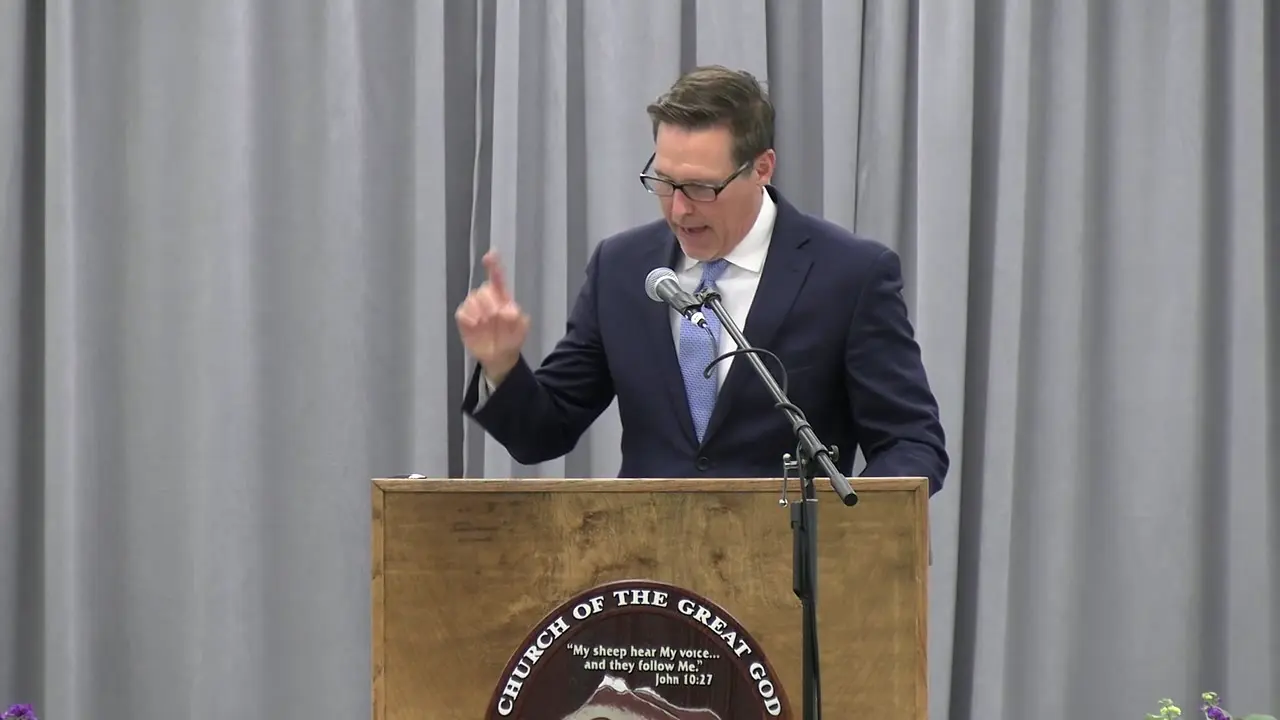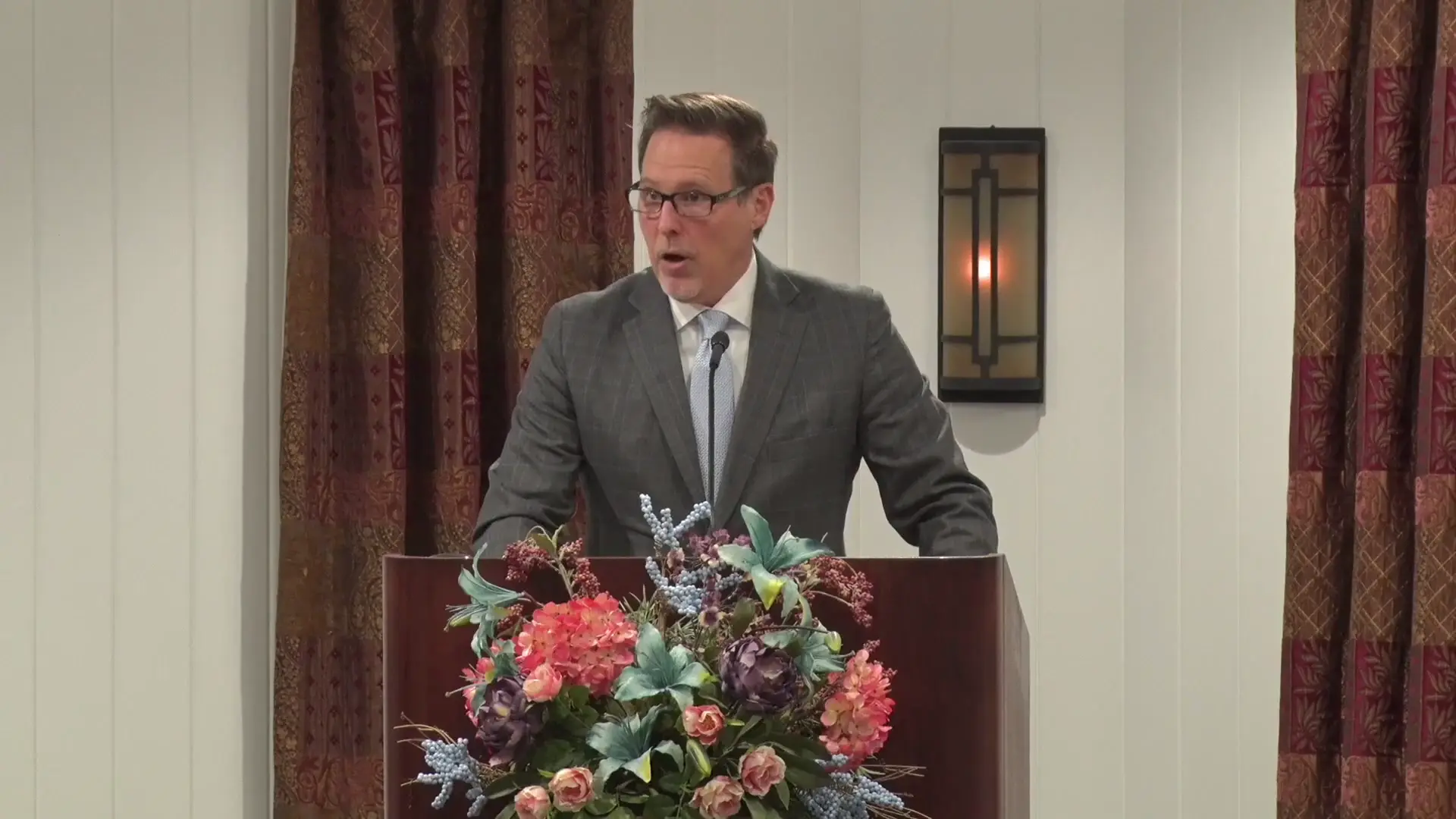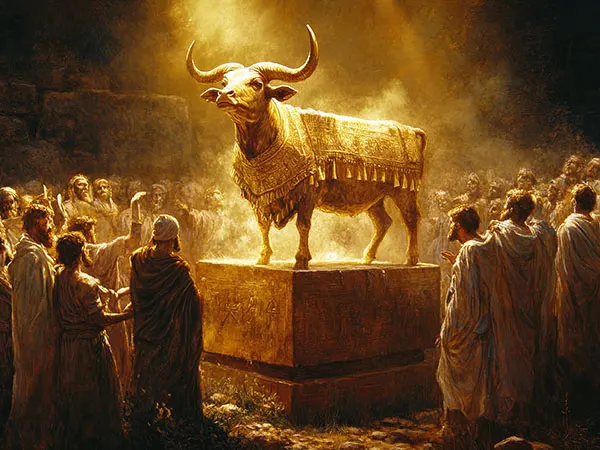Filter by Categories

Passover: An Extraordinary Peace Offering
Sermon by David C. GrabbeThe peace offering, as described in Leviticus 7, pictures an individual and the priest in fellowship with God, reflecting a state of harmony and satisfaction because God has already bestowed His favor. It is often termed a thanksgiving offering, fellowship offering, or communion sacrifice, celebrating the good terms between God and the individual, which inspires deep gratitude. This offering represents a shared meal with God, evoking feelings of security and well-being, where everyone is at peace with each other, including God Himself. The Passover bears a strong resemblance to the peace offering, aligning in most instructional aspects, though not identically. Like the peace offering, the Passover is a meal to be eaten on the same day the sacrifice is performed, with none remaining until morning; any leftovers must be burned. Additionally, the peace offering is not restricted to priests for consumption, nor must it be eaten at the tabernacle, and no parts of the animal are excluded, mirroring the Passover's communal nature. However, a notable difference is that the peace offering includes both leavened and unleavened bread, whereas the Passover permits only unleavened bread, elevating its significance as it is observed annually. The peace offering exemplifies a blood sacrifice for purposes beyond sin payment, showing a life given that results in a shared meal of fellowship. In this meal, God is satisfied because man is in fellowship with Him, and man is satisfied because God graciously accepts him and provides for his well-being. This mirrors the Exodus Passover, where God made an exemption and accepted Israel despite their deserved judgment, demonstrating overwhelming peace in His overlooking of their sins. The Passover represents the initiation of Israel's relationship with God, highlighting His profound grace in establishing fellowship with a sinful nation and delivering those who followed His instructions.
Offerings (Part Seven)
Sermon/Bible Study by John W. RitenbaughIf we want to follow Christ, we must sacrifice, take up our cross, and follow His example of service to God and others.
The Offerings of Leviticus (Part Nine): Conclusion (Part Two)
'Personal' from John W. RitenbaughThere must be something to prove we are one with Christ and in union with the Father and the Son. That something is the manner in which we conduct our life.
Offerings (Part Six)
Sermon/Bible Study by John W. RitenbaughThe sin offering was for sin in general deals with our evil nature, while the trespass offering deals with the fruits of that nature.
Offerings (Part Four)
Sermon/Bible Study by John W. RitenbaughThe peace offering symbolizes the abundant life that results from complete devotion to God (the burnt offering) and service to others (the meal offering).
It is Done! The Perfect Peace of God
Sermon by Mark SchindlerIn the peace offering, Christ is the priest, offeror, and offering. Since all parties share the peace offering as a meal, it exemplifies a peaceful communion.
Offerings (Part Five)
Sermon/Bible Study by John W. RitenbaughWe give peace offerings today through living sacrifice, keeping God's law out of love and to glorify Him rather than just to perform duty.
Sugar Cookie
Sermonette by Bill OnisickNavy Seal training has a humbling 'sugar cookie' exercise in which trainees are arbitrarily forced to endure excruciating discomfort and humiliation.

The One Thing
Feast of Tabernacles Sermon by Bill OnisickSacrifice is the foundational principle for salvation and spiritual growth, as exemplified by Christ's preordained sacrifice before the world's creation.

The Bond of Perfection: Sacrifice
Sermon by Bill OnisickSacrifice is the central theme of God's plan, not only the foundation of salvation, but also a means by which we are transformed into God's image.
Fearing God at the Feast (Part Three)
CGG Weekly by David C. GrabbeThe Feast is not a celebration just for the sake of having a good time. Our festivities should focus on God's faithfulness, rejoicing in all He did during the year.
Two Loaves, Baked with Leaven
Sermonette by David C. GrabbeThe leavening indicates that the wave loaves speak to this life rather than the resurrection. It is accepted by God only because of the other sacrifices.
Never With Hands Hanging at Your Sides
Sermonette by Mark SchindlerRejoicing did not become commanded until Pentecost, a joyous time in which God has brought us into fellowship with Our High Priest, enabling peace with Him.
Pentecost's Two Leavened Loaves (Part Five)
CGG Weekly by David C. GrabbeRight now in the church of God, doctrinal differences divide us, including when to start the count to Pentecost when Passover falls on a weekly Sabbath.
Pentecost's Two Leavened Loaves (Part Three)
CGG Weekly by David C. GrabbeWe may do the right thing toward a neighbor but not do it with the exact, perfect attitude that God does it in. Thus, our 'good' work contains corruption.

Why Is Atonement a Fall Festival?
Sermon by Richard T. RitenbaughThough Passover and Atonement both deal with Christ's sacrifice, several reasons emerge to make Atonement a better fit for the fall holy days.
Atonement Goats and Passover Lambs
Sermonette by David C. GrabbeThe Day of Atonement is not about Satan, but about the complete cleansing from sins through Christ. The Passover is not a sin offering, but a peace offering.
The Priesthood of God (Part Ten) Conclusion
Sermon by John W. Ritenbaugh (1932-2023)As future priests, we are going to be given rigorous, hands-on jobs to teach people righteousness and holiness, distinguishing between the sacred and profane.
The Sacrifices of Leviticus (Part 5)
Sermon by John W. RitenbaughThe meal offering represents the intense self-sacrifice required in service to man. Our service to man must be done for God's sake rather than man's appreciation.

The Bread and Wine of Passover
Sermon by David C. GrabbeThe Passover reminds us of the New Covenant on the anniversary of the Abrahamic covenant God using the original elements of the meal between Melchizedek and Abraham.
Unity and Division: The Blessing and the Curse (Part Three)
'Ready Answer' by Charles WhitakerGod instructed the Israelites to divide themselves by tribes on Mount Gerizim and Mount Ebal to pronounce blessings and curses, providing lessons for us.
The Commandments (Part Eleven)
Sermon/Bible Study by John W. RitenbaughHonor of parents is the basis for good government. The family provides the venue for someone to learn to make sacrifices and be part of a community.

Prepare to Meet Your God! (Part Five): Religion and Holiness
Article by John W. Ritenbaugh and Richard T. RitenbaughThe prophet Amos exposes the ancient Israelites' religion as syncretic, a blend of God's way and paganism, corresponding to this world's Christianity.